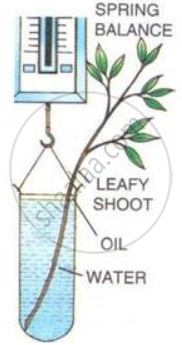Advertisements
Advertisements
प्रश्न
The radio labelled carbon in carbon dioxide supplied to potato plants in an experiment was seen in the tuber eventually. Trace the movement of the labelled carbon dioxide.
उत्तर
To observe the following movement of starch and the creation of carbohydrates from various parts of the plant to the others, the radiolabeled carbon dioxide is supplied. Leaves perform photosynthesis; the radioactive carbon dioxide is received by the leaves.
Following the photosynthesis process, carbohydrates in the leaves are the radioactive carbon. The presence of starch which is the by-product of photosynthesis is also proved. The carbohydrates transform into starch and are moved to the other organs to store. Hence, in the tubers, there are radioactive carbons, such as starch present in tubers.
Leaves →Phloem in veins→ Phloem in stem→ Tuber
APPEARS IN
संबंधित प्रश्न
Briefly explain, how transpiration helps in upward conduction of water in plants?
Give suitable explanation for the following:
Perspiration and transpiration help to cool the body temperature of the organism.
Given alongside is the diagram of an experimental set-up to demonstrate a certain phenomenon in plants.
Name the phenomenon being demonstrated.

Give a reason.
What happens to the movement of the air-bubble if the apparatus shown above is kept in dark.
Given alongside is the diagram of an experimental set-up to demonstrate a certain phenomenon in plants.

What is the purpose of the spring balance in the set-up?
What type of transpiration is possible in the xerophyte Opuntia?
Guard cells are responsible for the opening and closing of stomata.
Give the importance of transpiration?
Analogy:
Photosynthesis: ______:: Transpiration: Stomata
Transpiration occurs:
